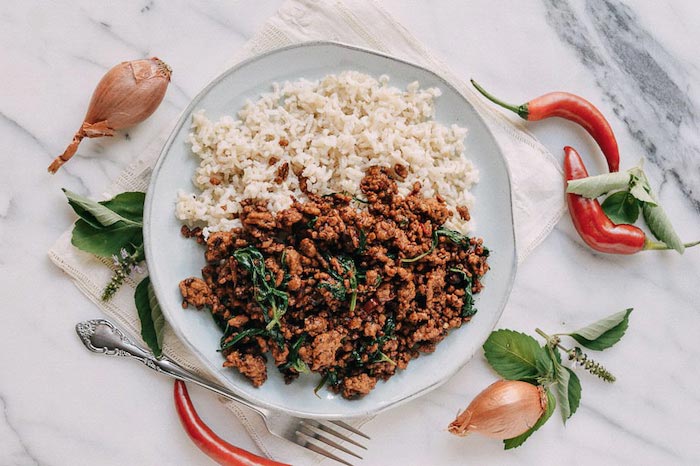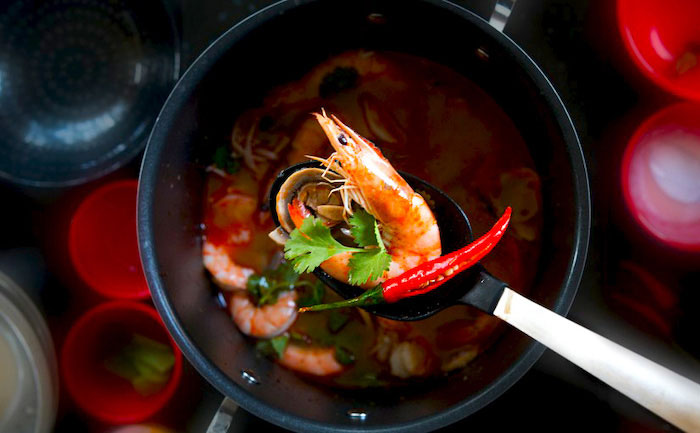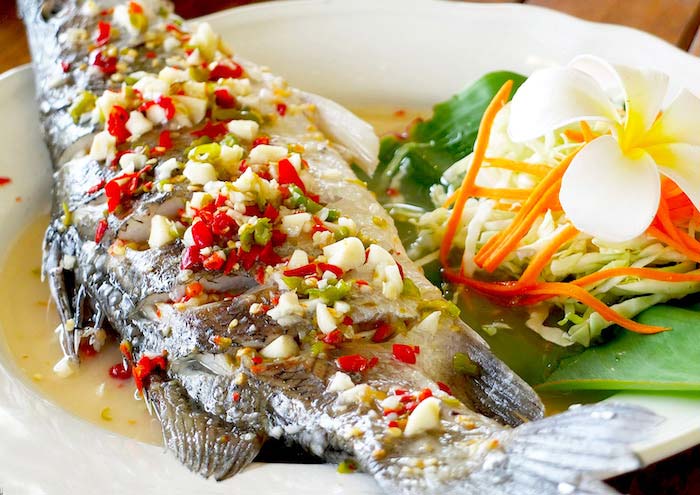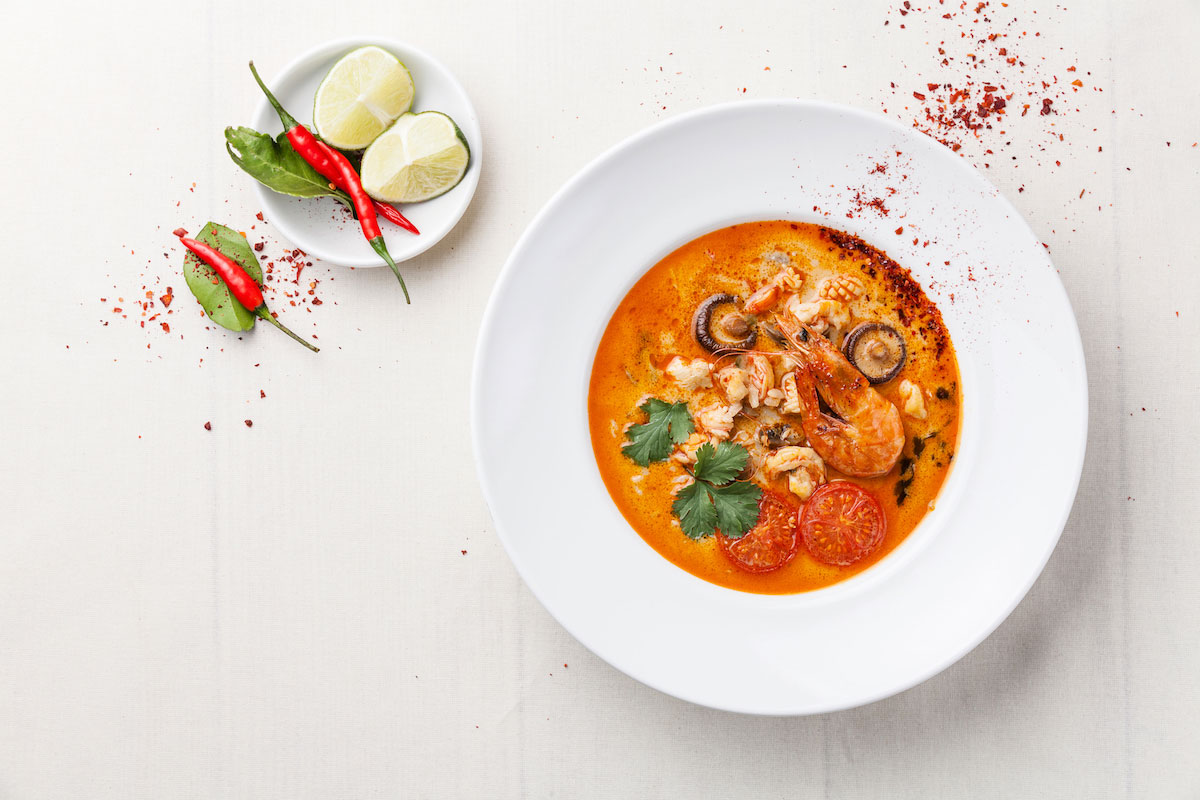There is no doubt about it when it comes to favorite cuisines of the world, Thailand’s culinary classics are high-up in the foodie charts. Thai dishes combine sweet, sour, salty, and spicy flavors to create a tantalizing taste that zings with freshness and creates instant lip boosters from the heat of birds-eye chili.
Woks sizzle on side-streets and in the renowned night markets, serving up fiery stir-fries and bubbling curries, whilst clay pots over charcoal promise an interactive foodie experience with a do-it-yourself hotpot (jim jum). There is also another Thai hotpot (suki) where food is dropped into boiling stock, cooked and dipped in a spicy sauce; a classic family dinner.
Thai food is visually stunning and totally unique, with layer-upon-layer of flavors that blend, contrast, and excite the senses in an appetizing journey of culinary surprise one traditional Thai dish after the other.
The History of Thai Food
What is especially exciting about Thai dishes is the rich cultural influences and the regional varieties too. The influx of Chinese settlers over a thousand years ago brought with it quick-fry noodle dishes, noodle soup (bamee nam) and fermented rice noodles with curry sauces (khanom jeen gaeng), as well as fluffy, steamed bread buns with sweet and savory fillings (salabao). A classic Thai breakfast and teatime comfort food is velvety Hainanese chicken cooked in a stock with rice (khao man gai) and a warming ginger sauce that originates in Hainan Province in China.
Even the classic Thai chili, ever-present in many recipes, was first introduced into Thailand by Portuguese missionaries nearly 500 years ago. Today, Thais are enjoying a love affair with Japanese and Korean foods, with plenty of restaurants serving up grill-your-own meats, seafood, and vegetables with in-table barbeques. The classic Thai barbeque (mookata) combines grilled meats with a ring of soup into which the juices run, with herbs and hard-boiled quails’ eggs, and noodles added.
In the hub of Southeast Asia, Thailand’s regional dishes are influenced by local communities, resources, and neighboring countries. Rich, dark massaman curry (gaeng massaman) from the South is thought to possibly trace back to Persian merchants from centuries ago and could be a reference to the Thai word for ‘Muslim’. Meanwhile, sticky rice (khao niao) from Issan in Thailand’s North-East is a staple in nearby Laos too, eaten with barbequed pork kebabs or with mango and coconut milk.
Traditional Thai Classics
Thai cuisine is one of the reasons the country attracts so many tourists and why so many visitors fall in love with the taste of Thailand along with the relaxed style of dining where dishes are shared, and courses come when they are ready. When eating out with family or friends, Thais love to dine with gusto, filling up their table with lots of different dishes. However, choosing which dishes to try is not always an easy task as there are so many choices and it can be confusing to work-out what dishes even exist.
Here are three all-time Thai classics to inspire your appetite during your vacation:

Thai basil stir-fry (pad gapow) is the most popular, everyday dish for Thais and a favorite in restaurants too, made with oyster sauce, garlic, chili, sugar, fish sauce, and oyster sauce added to Thai basil leaves and meat or seafood; often served with a fried egg on top for breakfast.

Hot and sour prawn soup (tom yum goong) is another firm Thai favorite, with mushrooms, prawns, lemongrass, chilis, and kaffir lime leaves; creating a fragrant and aromatic broth that is served with a bowl of steamed rice to share.

Steamed seabass with lemon (pla kapong neung manow) is an absolute must-try dish that is served in the middle of the table on a fish-shaped pan heated by a charcoal fire. The meat is delicately soft, while the chili, garlic, and salty-citrusy sauce is packed with wonderfully intense flavors.






